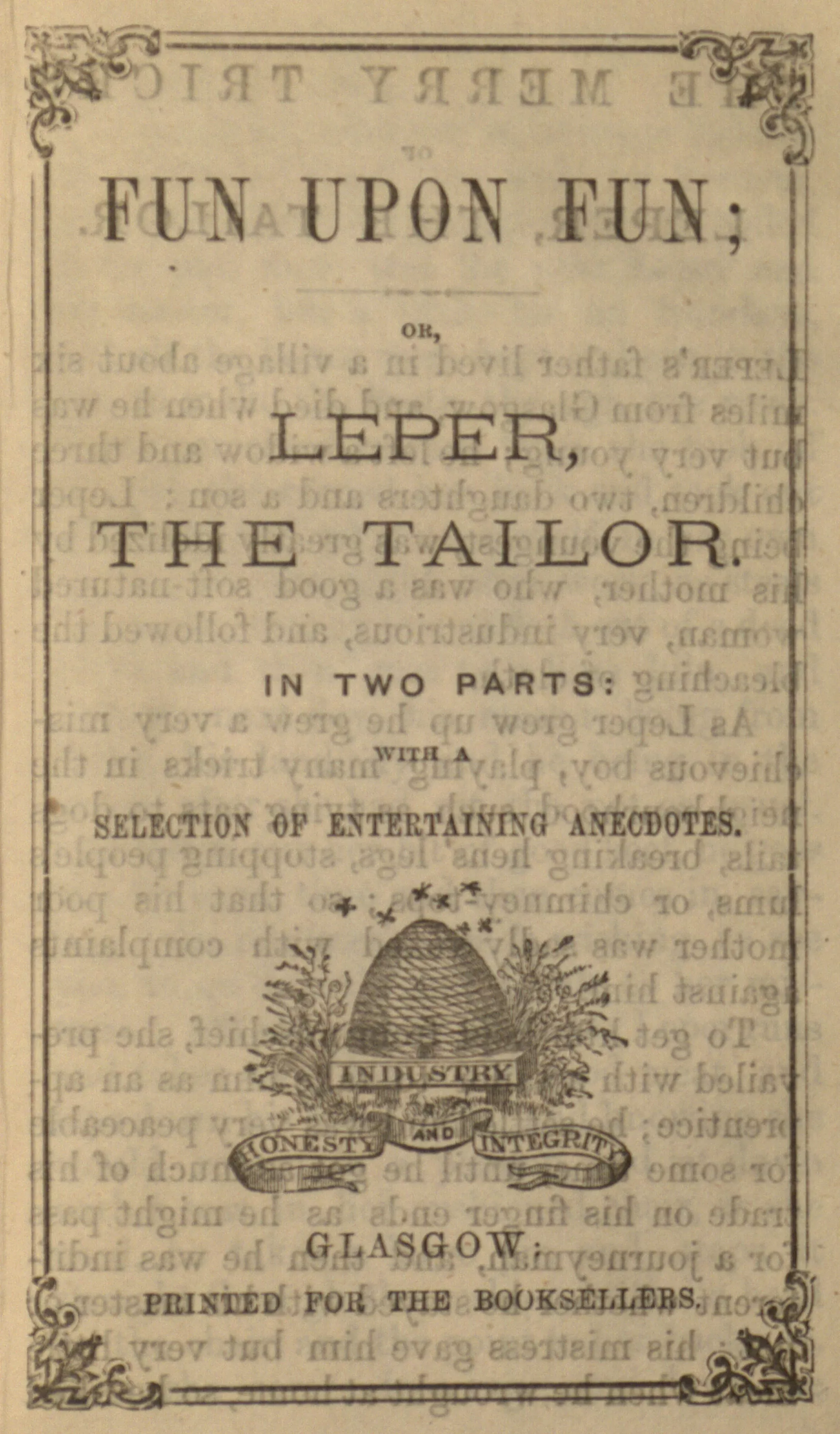Exhibit
Creation Date
c. 1820s
Height
5 cm
Width
5 cm
Medium
Description
A beehive sits atop a thick board, with wild-looking plants growing on either side. Grass grows around the hive's board. Seven bees hover around the top of the hive, with another at the hive's center. The board bears the word "industry"; below the grass, a banner with forked ends reads "honesty and integrity."
This image serves as an example of the frequency with which chap books were given random and irrelevant illustrations. While the symbolic hive with its banner proclaiming "Industry, Honesty, and Integrity" may be visually appealing, it is blatantly incongruous with the comic and crude subject matter of the chap book.
Images like this one were placed in chap books to make them more visually appealing; there was often little or no association between image and story, however. The low cost of producing woodcuts meant that they were an effective tool for instilling “proper” ideas and attitudes in the lower classes.
The perception and symbolic nature of bees changed significantly between the mid-eighteenth and the nineteenth century. For much of the eighteenth century bees were popular among authors and aristocrats alike; the former found them an excellent symbol of industry and political order, and the latter simply found them diverting, constructing glass hives in order to observe them more closely (Johnson 266; Coleman 107). By the end of the century, however the insect had fallen out of favor as a gentle distraction, as their association with prolific reproduction was increasingly seen as unsuitable. The hive’s use as a symbol of political order (on account of its organization as a community under a single ruler) faded as well; as the distinction between public and private solidified—with women consigned almost entirely to the private—the idea of a matriarchal hive became increasingly uncomfortable. As a result, the hive’s symbolic nature shifted towards a representation of the bonds between mother and daughter (Coleman 115). Though this idea never fully replaced the older notion of the hive as an exemplary hierarchal system, bees became a less self-explanatory icon in the nineteenth century than they had been previously.
As chapbooks were intended almost exclusively for the lower classes, the presence of an image that joins a symbol of diligent labor with an explicit creed to remain both industrious and moral shows that, as far north as Glasgow, children’s literature was being used to strengthen social behavior. Leper the Tailor is a comical and rather crude children’s story; nothing about it suggests the use of this kind of image for the title page—nor was any likely intended, since, as mentioned above, it was common for printers simply to use whatever wood blocks they could acquire (O’Malley 21). The fact that this particular image, consisting in both symbol and text as an exhortation to hard work, was arbitrarily attached to this unsuitable story suggests that woodcuts of this nature were common. This commonality is not surprising, as chap books were a reliable way of reaching a large audience of the proper sort—particularly in Scotland, where literacy rates were somewhat higher than in England (Haakonssen 693).
Likewise, the symbolic use of the hive to accompany a message of “Industry, Honesty and Integrity” suggests that this image was carved significantly earlier than the publication date of the chapbook: as discussed above, the discomfort derived from the matriarchal implications of the beehive would have made it an unstable signifier of “industry,” a term descriptive of the public sphere, by the nineteenth century. The apparent unconcern with the issues of sexual power raised by bee life further emphasizes the somewhat careless nature with which visuals were chosen to accompany chapbooks.
Collection
Accession Number
815800 noncurrent no. 4
Additional Information
Bibliography
Coleman, Deirdre. "Entertaining Entomology: Insects and Insect Performers in the Eighteenth Century." Eighteenth-Century Life 30.3 (2006): 107-134. Print.
Haakonssen, Knud. “Scottish Enlightenment.” An Oxford Companion to The Romantic Age: British Culture 1776-1832. Gen. Ed. Iain McCalman. Oxford: Oxford UP, 1999.
Johnson, James W. "The Neo-Classical Bee." Journal of the History of Ideas 22.2 (1961): 262-66. Print.
Milne, Ann. "Fables of the Bees: Species as an Intercultural Discourse in Eighteenth-Century Scientific and Literary Texts." L'Esprit Createur 46.2 (2006): 33-41. Print.
O’Malley, Andrew. “The Coach and Six: Chapbook Residue in Late Eighteenth-Century Children's Literature.” The Lion and the Unicorn 24.1 (2000): 18-44. Print.

